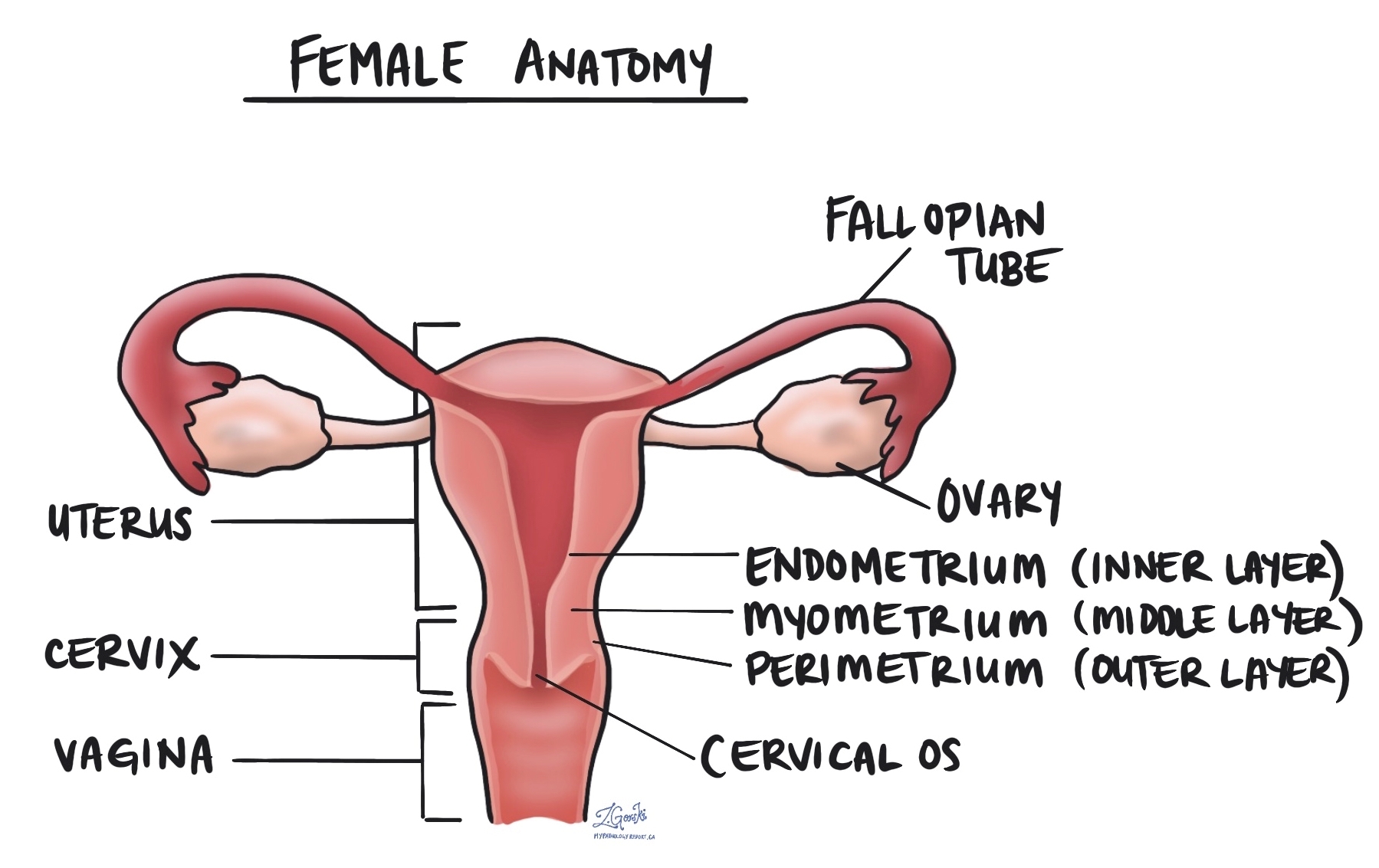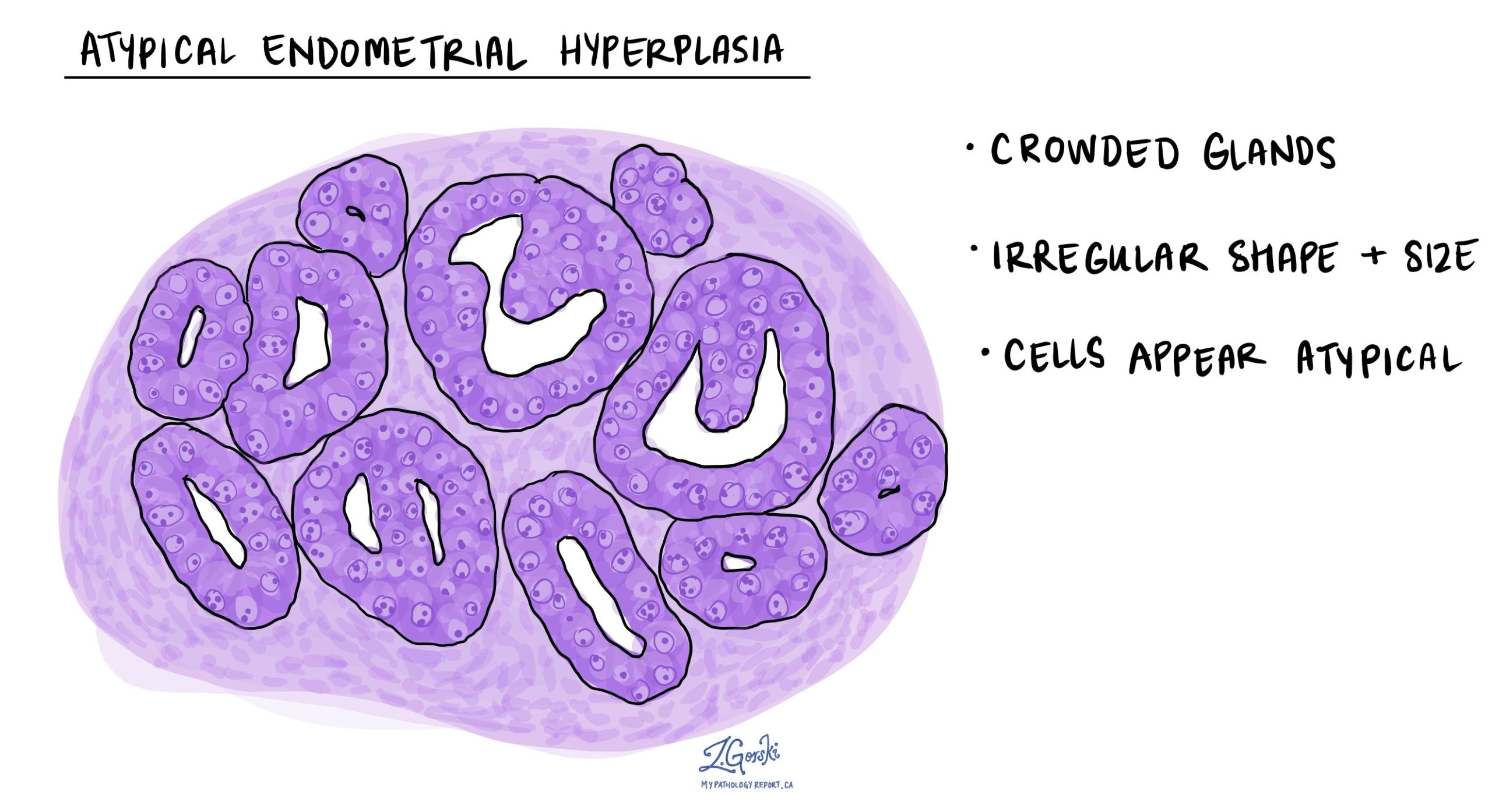by Emily Goebel, MD FRCPC
April 4, 2024
Atypical endometrial hyperplasia (AEH) is a precancerous condition associated with an abnormally thick endometrium. It is considered a precancerous condition because over time it can turn into a type of endometrial cancer called endometrioid adenocarcinoma. Another name for this condition is endometrioid intraepithelial neoplasia.

Does atypical endometrial hyperplasia mean cancer?
No. Atypical endometrial hyperplasia is not cancer. However, it is considered a precancerous condition because it can turn into a type of endometrial cancer called endometrioid adenocarcinoma over time.
What are the symptoms of atypical endometrial hyperplasia?
Symptoms of atypical endometrial hyperplasia include abnormal uterine bleeding, such as heavy menstrual bleeding, bleeding between menstrual periods, or postmenopausal bleeding.
How does atypical endometrial hyperplasia develop?
During the menstrual cycle, the endometrium cycles through a proliferative phase (growth phase) and secretory phase in response to hormones (estrogen and progesterone) made and released by the ovaries.
In a normal menstrual cycle, the endometrium grows thicker under the influence of estrogen during the proliferative phase. This is followed by ovulation where a mature egg is released from the ovary, pushed down the fallopian tube, and made available to be fertilized.
After ovulation, the endometrium enters the secretory phase under the influence of progesterone. If fertilization does not occur, the endometrium breaks down, which leads to the discharge of blood and endometrial tissue through the vagina (menstruation, menstrual period, menstrual flow).
Some women experience an imbalance in the hormones that control the growth of the endometrium, resulting in high levels of estrogen and low levels of progesterone. When there is too much estrogen and not enough progesterone, the endometrium continues to grow and becomes abnormally thick.
When viewed under the microscope, the abnormally thick endometrium can show a variety of changes that include both non-cancerous conditions and pre-cancerous conditions that can lead to cancer over time. Atypical endometrial hyperplasia is a precancerous change associated with excess estrogen.
What causes increased estrogen?
Some common situations that can result in increased or prolonged estrogen exposure include polycystic ovary syndrome, obesity, estrogen-only birth control pills, and tamoxifen treatment. Women nearing menopause (perimenopause) may also experience prolonged estrogen exposure.
How is this diagnosis made?
In patients with abnormal uterine bleeding, the endometrium is sampled by endometrial biopsy or endometrial (uterine) curetting (scrapings of the endometrium with a spoon-shaped instrument). The tissue sample is then examined by your pathologist under the microscope.
Microscopic features
When examined under the microscope, your pathologist will see crowded endometrial glands that are irregular in size and shape. The epithelial cells that line the inside of the glands will look abnormal compared to the cells that are usually found inside normal, healthy endometrial glands. Pathologists use the word atypical to describe these abnormal cells.


What are the treatment options for atypical endometrial hyperplasia?
High levels of estrogen and atypical endometrial hyperplasia are associated with an increased risk of cancer called endometrioid carcinoma. As a result, women with atypical endometrial hyperplasia are offered treatment.
Options for treatment include a surgical procedure to remove the uterus (hysterectomy) typically with both fallopian tubes and ovaries or an intrauterine device (IUD) for women who are still considering having children in the future.

